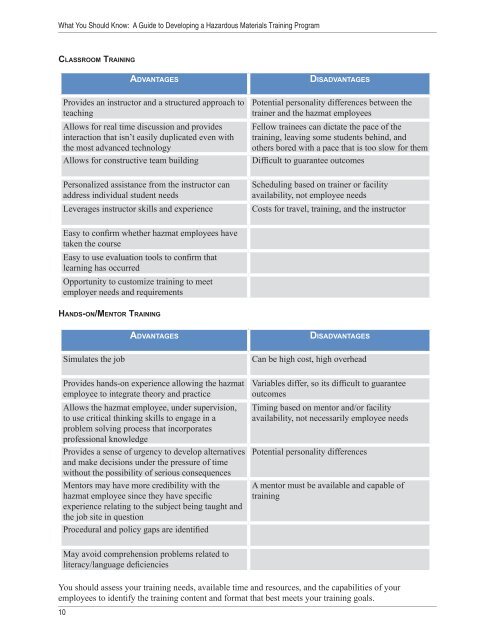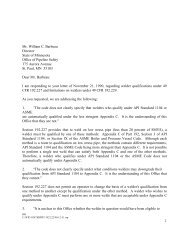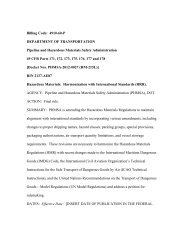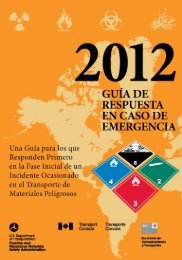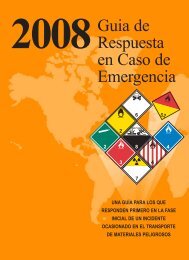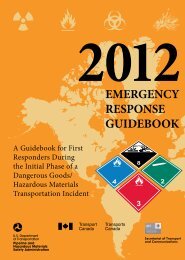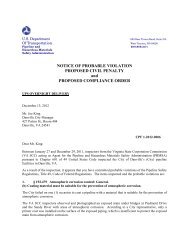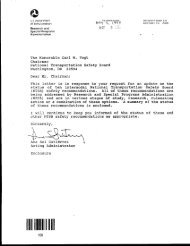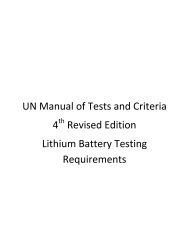Training Guidance7609am.indd - PHMSA - U.S. Department of ...
Training Guidance7609am.indd - PHMSA - U.S. Department of ...
Training Guidance7609am.indd - PHMSA - U.S. Department of ...
Create successful ePaper yourself
Turn your PDF publications into a flip-book with our unique Google optimized e-Paper software.
What You Should Know: A Guide to Developing a Hazardous Materials <strong>Training</strong> Program<br />
CLASSROOM TRAINING<br />
HANDS-ON/MENTOR TRAINING<br />
You should assess your training needs, available time and resources, and the capabilities <strong>of</strong> your<br />
employees to identify the training content and format that best meets your training goals.<br />
10<br />
ADVANTAGES DISADVANTAGES<br />
Provides an instructor and a structured approach to<br />
teaching<br />
Allows for real time discussion and provides<br />
interaction that isn’t easily duplicated even with<br />
the most advanced technology<br />
Potential personality differences between the<br />
trainer and the hazmat employees<br />
Fellow trainees can dictate the pace <strong>of</strong> the<br />
training, leaving some students behind, and<br />
others bored with a pace that is too slow for them<br />
Allows for constructive team building Diffi cult to guarantee outcomes<br />
Personalized assistance from the instructor can<br />
address individual student needs<br />
Scheduling based on trainer or facility<br />
availability, not employee needs<br />
Leverages instructor skills and experience Costs for travel, training, and the instructor<br />
Easy to confi rm whether hazmat employees have<br />
taken the course<br />
Easy to use evaluation tools to confi rm that<br />
learning has occurred<br />
Opportunity to customize training to meet<br />
employer needs and requirements<br />
ADVANTAGES DISADVANTAGES<br />
Simulates the job Can be high cost, high overhead<br />
Provides hands-on experience allowing the hazmat<br />
employee to integrate theory and practice<br />
Allows the hazmat employee, under supervision,<br />
to use critical thinking skills to engage in a<br />
problem solving process that incorporates<br />
pr<strong>of</strong>essional knowledge<br />
Provides a sense <strong>of</strong> urgency to develop alternatives<br />
and make decisions under the pressure <strong>of</strong> time<br />
without the possibility <strong>of</strong> serious consequences<br />
Mentors may have more credibility with the<br />
hazmat employee since they have specifi c<br />
experience relating to the subject being taught and<br />
the job site in question<br />
Procedural and policy gaps are identifi ed<br />
May avoid comprehension problems related to<br />
literacy/language defi ciencies<br />
Variables differ, so its diffi cult to guarantee<br />
outcomes<br />
Timing based on mentor and/or facility<br />
availability, not necessarily employee needs<br />
Potential personality differences<br />
A mentor must be available and capable <strong>of</strong><br />
training


